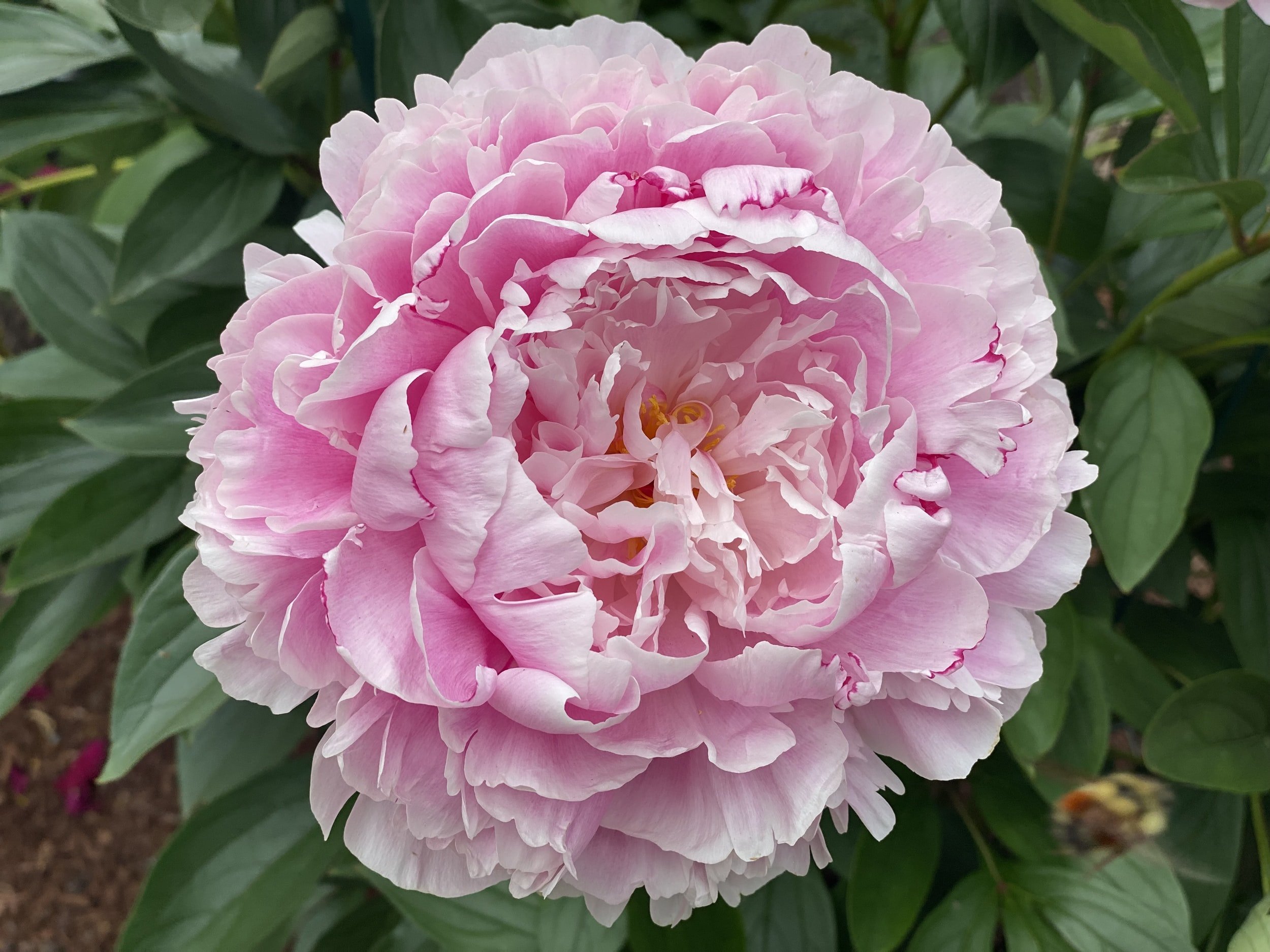Peonies are not just flowers—they are living heirlooms. With their lush, full blossoms and long lifespan, peonies can flourish in the same garden bed for decades, offering more beauty with each passing year. Their blossoms range from soft pastels to rich crimson, and when they bloom, it feels like the entire garden pauses in admiration.
Though their peak is fleeting, peonies reward the patient gardener with elegance, reliability, and unmatched floral drama. Once established, they ask for little and deliver plenty.

Portrait of the Peony
Beloved across continents, Peonies are hardy perennials from the Paeoniaceae family. There are three main types: herbaceous, tree peonies, and Itoh (intersectional) hybrids—each with its own charm.
- Type: Herbaceous perennial / shrub (tree peonies)
- Family: Paeoniaceae
- Common Names: Peony, garden peony, tree peony
Foliage and Form
Peonies are sturdy, upright plants with deep green, lobed foliage that remains attractive even after flowering. Herbaceous types die back in winter, while tree peonies retain woody stems.
- Height: 60–100 cm (2–3.3 ft) for herbaceous, up to 1.5 m (5 ft) for tree peonies
- Spread: 60–90 cm (2–3 ft)
- Growth Habit: Clump-forming, upright
Blooms and Fragrance
Each spring, peonies erupt into extravagant blooms. From simple, single-petaled flowers to full doubles, the flowers often perfume the air and command the spotlight.
- Bloom Time: Late April to June
- Color: White, pink, red, coral, yellow, bicolor
- Fragrance: Often sweet, especially in heirloom varieties
The Right Time to Plant, Prune, and Enjoy Peonies
| Month | Planting | Flowering | Pruning |
|---|---|---|---|
| January | ❌ | ❌ | ✅ Cut back old stems |
| February | ❌ | ❌ | ✅ Remove mulch, prep for spring |
| March | ✅ Container-grown plants | ❌ | ✅ Light trimming if needed |
| April | ✅ Plant bare-root or potted | ✅ (start of bloom) | ❌ |
| May | ❌ | ✅ Peak bloom | ❌ |
| June | ❌ | ✅ (late bloom in cold zones) | ✅ Deadhead spent blooms |
| July | ❌ | ❌ | ✅ Cut back any diseased stems |
| August | ✅ Bare-root planting (late) | ❌ | ❌ |
| September | ✅ Best time to divide and plant | ❌ | ✅ Remove spent growth |
| October | ✅ Ideal for bare-root planting | ❌ | ✅ Final pruning (herbaceous) |
| November | ✅ (mild zones) | ❌ | ✅ Mulch for winter |
| December | ❌ | ❌ | ✅ Remove debris and protect |
✅ = Recommended ❌ = Not advised
Watering, Sunlight, and Environment for Peonies
Watering
Peonies need consistent moisture during growth and blooming. Once established, they are drought-tolerant but benefit from deep watering in dry periods.
- When to Water: Spring through summer
- How Much: Deep watering every 7–10 days
- Watch out for: Soggy soil and waterlogged roots
Sunlight
Peonies love sunshine. To bloom prolifically, they require at least 6 hours of direct sun. In hot climates, some afternoon shade may prevent flower fade.
- Ideal Exposure: Full sun
- Shady Sites: Fewer blooms, floppy stems
- Too Much Shade: May prevent flowering altogether
Indoor vs Outdoor
Peonies are strictly outdoor plants. Their size, seasonal rhythm, and need for chilling hours make them unsuitable for containers or indoor settings long term.
- Best Location: Garden beds, borders, cottage gardens
- Avoid: Growing indoors or in containers for multiple years
Temperature
Peonies require cold winters to trigger blooming. They’re ideal for temperate climates and survive harsh winters with ease.
- Optimal Range: 5–25°C (41–77°F)
- Hardiness Zones: USDA zones 3–8
- Protection Tip: Mulch in cold areas to protect buds
Ideal Soil Conditions for Growing Peonies
| Soil Feature | Optimal Condition | Why It Matters |
|---|---|---|
| Soil Type | Loamy with organic matter | Holds moisture but drains well |
| Texture | Loose, friable | Supports root development |
| Drainage | Excellent | Peonies hate wet feet |
| Moisture | Evenly moist in spring/summer | Promotes lush growth and flowering |
| Soil pH | Neutral to slightly alkaline (6.5–7.5) | Supports healthy root development |
| Fertility | Moderate to rich | Boosts blooms—avoid overfeeding nitrogen |
💡 Tip: Add compost or aged manure to soil before planting to boost fertility.
Common Problems & Solutions
| Issue 🐾 | Symptoms 🔍 | Solutions 🛠️ |
|---|---|---|
| No Blooms 🌱 | Foliage grows, but no flowers | Check depth—crowns planted too deep |
| Botrytis Blight 🍄 | Black spots, bud rot | Remove affected parts; use fungicide |
| Weak Stems 💐 | Flowers flop to the ground | Stake or plant near support; avoid shade |
| Ants 🐜 | Crawling on buds | Harmless—just attracted to nectar |
| Crown Rot 💧 | Base of plant rots in wet soil | Improve drainage, avoid overwatering |
Peonies may ask for patience, but they repay in spades. From their spring fireworks of fragrance and color to the quiet elegance of their foliage, they embody grace and permanence. Plant them once, and for generations, they’ll remind you every spring why they are among the most beloved flowers in the world.